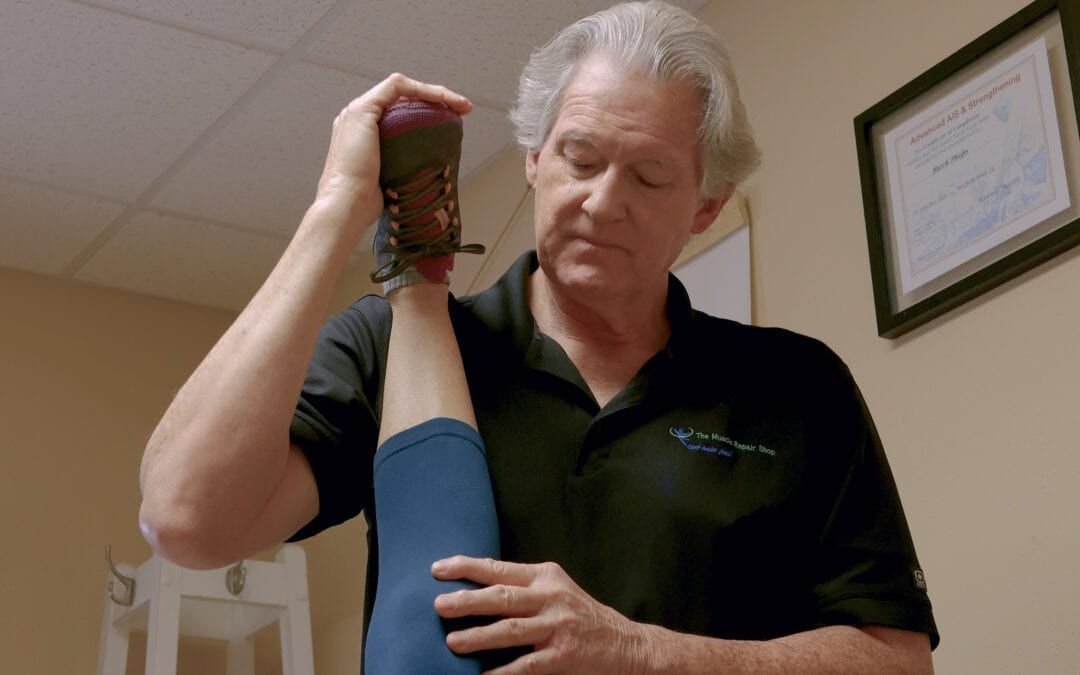Muscle therapist Butch Phelps of The Muscle Repair Shop is gaining attention beyond the United States with recent conversations with experts in the Netherlands and a feature article on the blog of Japanese pharmaceutical giant Hisamitsu.
The expanding nature of The Muscle Repair Shop model with online training and on-demand videos launching soon make it possible for aching muscles all over the world to find relief with the Stretch-n-Release Technique.
For clarification, Salonpas®, a subsidiary of Hisamitsu, features a line of products to manage body pain sold to consumers. These include Pain Relief Patches & Sprays and the new Salonpas® Arthritis. Pain Relief Gel. In agreeing to the feature Butch Phelps is in no way endorsing Salonspas® products, but is grateful for the opportunity to share the Stretch-n-Release Technique with those who suffer with body and muscle pain all over the world.
Below is the text of the article, but we encourage you to visit the article on its original link to learn more.
Meet Muscle Therapist Butch Phelps: A SalonSpas Wellness Warrior
Butch Phelps, B.S., LMT is a muscle therapist, who owns the Muscle Repair Shop in Sarasota, Florida, whose mission is to help people stop their chronic pains at any age. He created the Stretch n’ Release Technique that identifies the true cause of the pain, provides tools to solve the pain, and sends custom videos to his clients for how to maintain a more pain-free life forever. “This technique works on people up to 95 years of age,” says Butch Phelps. “Whether they are an athlete wanting to stop and/or prevent injuries or an older person wanting to live with less pain and retain movement, this technique works.”
Phelps has a B.S. in Aging Sciences and an A.S. in Advanced Therapeutic Techniques. Salonpas sat down with Butch Phelps to learn more about his technique to reduce pain:
Tell us about your background, and how you came to own The Muscle Repair Shop.
Our lives leave little clues along the way, but we can see them in hindsight. In 1978, I was in a head-on collision and broke my pelvis in multiple places and my left arm. The doctor placed no metal in my body as he did not believe in putting metal in the bodies of healthy people. In 1997, I lost 315 lbs. with the help of a doctor that taught me how to train my brain to look at food differently. After losing the weight I was in great shape, but in terrible back pain. Over the next 5 years, my back pain just kept coming back no matter what I tried, and I tried nearly everything I could find. In 2003, I began my journey into massage therapy and never looked back. I was given the opportunity to study with Aaron Mattes, founder of Active Isolated Stretching, for 6 months. I took a class on brain health as I have always been fascinated with how our brains work. That is when I started piecing together the connection between the brain and the the emotion state of our muscles. I volunteered for 5 years at a local senior center to work on older people because of the chronic pain that older people suffer. It was surprising how fast people in their 70’s, 80’s, and even 90’s responded to what I was doing. Even the volunteer doctors were amazed.
I was interviewing at several massage salons for a job and each one turned me down as they wanted female therapists. Finally, a local Chiropractor, who did not want to hire me as an employee or contractor, suggested he would rent me a room. I had no clients, no marketing, just a room and a promise of some future clients from the Chiropractor. He did send me some of his patients and The Muscle Repair Shop was born.
What is a ‘muscle therapist’?
Muscle Therapist has been my term to differentiate me from other massage therapists. My work is different from traditional massage therapy. When someone asked me what I did it was difficult to explain at first and if I said massage therapy they would immediately think of traditional massage therapy. In the beginning I did mostly traditional massage, but as I started to do more of my Stretch n’ Release Technique, my clients began requesting the Stretch n’ Release Technique instead of massage. What is funny, many of my clients today will tell you they have a massage therapist for relaxation, and they have me for pain relief. My clients have placed me in their minds between massage therapy and physical therapy. What I have realized recently is, I am more of a Functional Massage Therapist as I am improving movement as I am helping my clients reduce their pain.
Tell us about your ‘Stretch n’ Release’ Technique.
I studied with Aaron Mattes to learn his Active Isolated Stretching. I could see his stretching technique was far better than any other stretching technique I had ever seen, especially when you are in pain. It hit me one day to put what I knew from massage with what I learned from Aaron and my back started to improve, however something was still missing! I began tearing apart Aaron’s work trying to figure out if there was a better way of doing it. I stopped strapping people to the massage table and I stopped trying to force the muscle to release before the person was ready emotionally. The result improved but something was still missing.
Then I read in the newspaper about a brain health class at a local hospital taught by a neurosurgeon from the University of Washington. In this class the doctor began talking about the connection between our brain and the muscles. More importantly, how our emotions affect our muscles. A light bulb went off! What I realized was, when we do deep tissue massage, force a stretch, or use piece of equipment with no regard to the client’s emotional state, we are fighting an uphill battle and are more likely to bruise them or make them sore with only a short-term relief. If I can coach the person into the proper emotional state for the muscle release, their muscles will relax and let go which will remove most or their pain. I will then coach them into easy daily stretches. I have helped many people who have suffered for months to years with pain. By combining self-massage, stretching, and the understanding of how emotions affect your muscles, which is the Stretch n’ Release Technique, my clients can help themselves out of pain.
If you are working with older adults, how do you vary the therapy and how can it address senior pain issues?
I have worked on people up to 98 years old and when done correctly, the pressure is the same regardless of the age. 70% of my clients are over 65 years old. What is interesting from a professional view is, many therapists feel a need to be more cautious with older people when the problem is we are too hard on everybody.
Again, I am working through their brain and not forcing their muscles. Older people will bruise easily when doing deep tissue massage, but so can younger people, even if they are not on blood thinners. When a person bruises that tells you they are fighting and probably will be sore tomorrow. We have all heard of muscle memory and it is described as if each of our muscles have a brain to remember what they did yesterday. The truth is, we have one brain and muscle memory is simply what your brain believes is safe for you to do. When we are older our brains work the same. When older people are afraid of falling they will take shorter strides which can lead to plantar fasciitis, low back pain, and even neck pain.
Tell us about a typical day in your life; from when you arise to when you retire.
I usually wake up by 6 am and write for 30 minutes a day. I am working on e-books which will turn into a book, articles, and blog articles. At 6:30 am I spend time with my wife, Susan as she wakes up. By 7 am, we meditate for 20 minutes. I then eat breakfast and head to my office by 8. I work on appointments until noon then have lunch and do a mid-day workout. From 2-6 pm I work on my clients. When I arrive back home, my wife and I spend time discussing our day and eating dinner. We love to cook together. We may watch a movie together and then go to bed around 9:30 pm.


